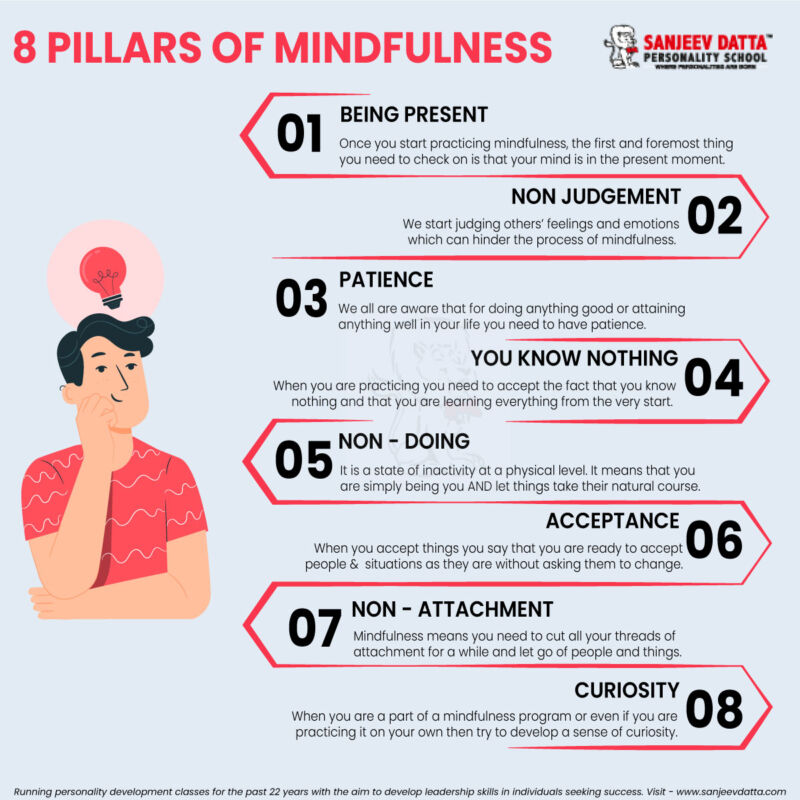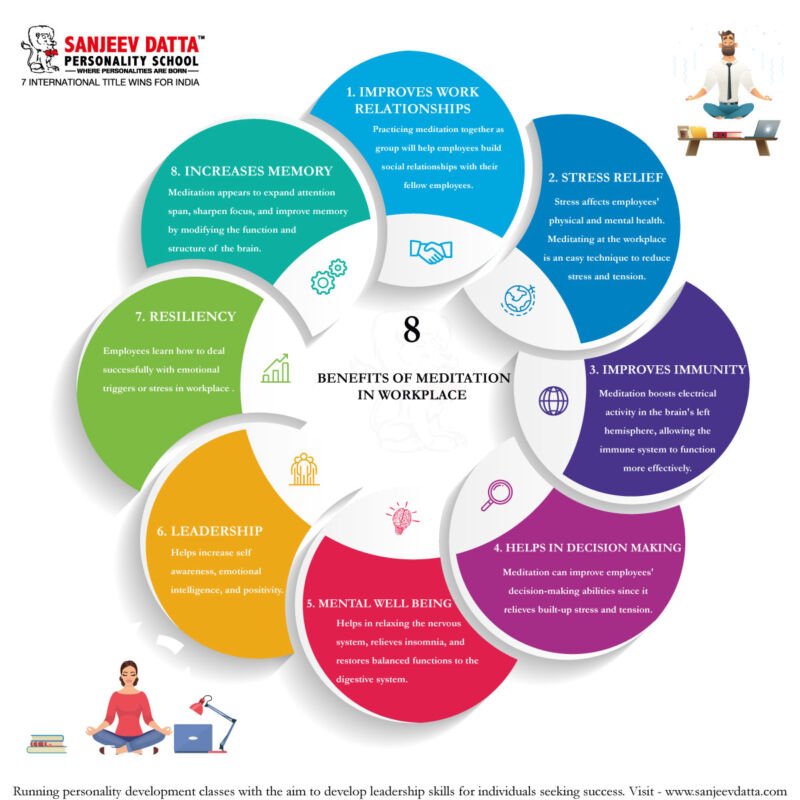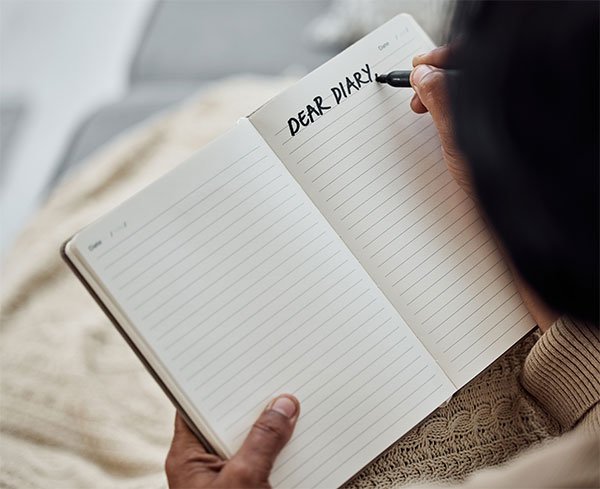Do you find your mind constantly racing between competing priorities, unable to focus on the task at hand? Are you carrying emotional weight from unresolved conflicts, past disappointments, or future anxieties that drain your energy and effectiveness? If so, you’re experiencing what millions of professionals face daily—mental clutter and emotional turbulence that undermine both performance and well-being. The solution might be simpler than you think: a daily journaling practice. Research consistently demonstrates that journaling improves focus by externalizing thoughts, processing emotions, and creating mental clarity that enhances both cognitive performance and emotional resilience. This isn’t just anecdotal wisdom—neuroscience confirms that the act of writing engages brain regions associated with emotional regulation, memory consolidation, and executive function in ways that passive thinking cannot replicate.
This comprehensive guide explores exactly how journaling creates measurable improvements in focus and emotional balance, the scientific mechanisms behind these benefits, practical journaling techniques for busy professionals, and how to establish a sustainable practice that delivers transformative results without requiring hours of daily commitment.
The Science Behind Journaling’s Impact on Focus
Understanding the neurological and psychological mechanisms through which journaling operates helps appreciate why this simple practice produces profound results.
Cognitive Load Theory and Mental Decluttering
Your working memory—the mental workspace where you process information and make decisions—has limited capacity. Psychologists estimate we can hold only 5-9 pieces of information simultaneously. When your mind is cluttered with unresolved thoughts, emotional concerns, and mental to-do lists, this precious cognitive capacity is consumed by background noise rather than focused on your current priority.
How journaling reduces cognitive load:
- Transfers thoughts from working memory to external storage (paper)
- Frees mental resources previously devoted to “not forgetting”
- Creates psychological closure on unresolved concerns
- Organizes scattered thoughts into a coherent structure
- Reduces mental rumination and repetitive thinking patterns
When you journal about concerns, tasks, or emotions, your brain can release them from active processing. Studies using brain imaging show that after expressive writing, activity in the prefrontal cortex (associated with worry and overthinking) decreases while activity in task-focused regions increases. This neurological shift directly translates to improved concentration and sustained attention.

The Psychological Distance Effect
Writing creates psychological distance between you and your thoughts, transforming chaotic internal experiences into observable external objects you can examine rationally.
Benefits of psychological distance:
- Reduces emotional reactivity to stressful situations
- Enables objective analysis of problems and patterns
- Decreases the intensity of negative emotions
- Improves decision-making by reducing emotional bias
- Facilitates perspective-taking and alternative viewpoints
This distancing effect is why journaling improves focus—you’re not constantly emotionally entangled with your thoughts. Instead, you can observe them, understand them, and let them go, freeing attention for what matters now.
Emotional Regulation Through Expressive Writing
The prefrontal cortex (PFC), responsible for executive function and focus, is hijacked when the amygdala (emotional processing center) detects threat or distress. This “amygdala hijack” explains why emotional turbulence destroys concentration—your brain literally cannot focus when it perceives emotional danger.
Journaling’s emotional regulation mechanism:
- Activates language centers that communicate with the amygdala
- Reduces amygdala reactivity through conscious processing
- Strengthens connections between emotional and rational brain regions
- Creates coherent narratives from chaotic emotional experiences
- Provides a safe space to process difficult emotions without consequence
Research by psychologist James Pennebaker demonstrates that expressive writing about traumatic or stressful experiences produces measurable improvements in immune function, blood pressure, and psychological well-being. These physiological changes reflect reduced stress load, which directly enhances cognitive performance and focus capacity.
benefits of personality development for entrepreneurs
Types of Journaling and Their Specific Benefits
Different journaling approaches serve different purposes. Understanding these variations helps you choose techniques aligned with your goals.
1. Stream-of-Consciousness Journaling (Morning Pages)
Method: Write three pages (or 750 words) immediately upon waking without filtering, editing, or structuring. Let thoughts flow without judgment.
Focus and emotional benefits:
- Clears mental clutter before the day begins
- Processes residual emotions from dreams or the previous day
- Identifies patterns in thoughts and concerns
- Creates a blank slate mental state for focused work
- Reduces decision fatigue by establishing a morning routine
Best for: Professionals who struggle with morning mental fog, anxiety, or difficulty transitioning into productive work mode.
Time commitment: 20-30 minutes daily, ideally before checking email or phone.
2. Gratitude Journaling
Method: Write 3-5 things you’re grateful for daily, focusing on specific details rather than generic statements.
Focus and emotional benefits:
- Shifts attention from problems to positive aspects of life
- Reduces rumination on negative experiences
- Improves mood and emotional resilience
- Enhances perspective during challenging periods
- Strengthens neural pathways associated with positive emotions
Research finding: Regular gratitude practice increases gray matter volume in the prefrontal cortex, the same region responsible for sustained attention and focus.
Best for: Professionals experiencing burnout, negativity bias, or difficulty maintaining motivation.
Time commitment: 5-10 minutes daily, effective morning or evening.

3. Reflective Journaling (End-of-Day Review)
Method: Review your day, analyzing what went well, what challenges arose, what you learned, and what you’ll do differently tomorrow.
Focus and emotional benefits:
- Creates closure on the workday, preventing evening rumination
- Consolidates learning and experiences into long-term memory
- Identifies productivity patterns and focuses on obstacles
- Processes emotions from interpersonal conflicts or disappointments
- Plans improvements without carrying stress into the evening
Best for: Professionals who struggle with work-life boundaries, carry work stress home, or want to accelerate skill development.
Time commitment: 10-15 minutes at workday’s end.
4. Problem-Solving Journaling
Method: Identify a specific challenge, write about it from multiple angles, generate possible solutions, evaluate options, and commit to action steps.
Focus and emotional benefits:
- Transforms vague anxiety into concrete problems with solutions
- Reduces decision paralysis through structured thinking
- Creates action plans that reduce mental burden
- Separates solvable problems from emotional reactions
- Builds confidence in problem-solving capabilities
Best for: Professionals facing complex decisions, career crossroads, or persistent challenges generating anxiety.
Time commitment: 20-30 minutes when facing specific challenges.
For professionals seeking to maximize journaling’s benefits while developing complementary self-awareness and emotional intelligence skills, comprehensive personality development training provides structured frameworks that amplify individual reflection practices. Expert training teaches advanced journaling techniques alongside emotional regulation strategies, mindfulness practices, and cognitive behavioral approaches that create synergistic effects. Professional facilitators help identify blind spots in self-perception, provide accountability for maintaining consistent practices, and offer personalized guidance for using journaling insights to drive meaningful behavioral change. Training programs accelerate the personal growth journey by combining solitary reflection with expert coaching and peer learning that journaling alone cannot provide.

5. Goal-Setting and Progress Tracking
Method: Write specific, measurable goals, break them into action steps, and regularly review progress while adjusting strategies.
Focus and emotional benefits:
- Clarifies priorities and reduces scattered attention
- Creates intrinsic motivation through progress visibility
- Reduces anxiety about whether you’re “doing enough”
- Celebrates wins that might otherwise go unnoticed
- Maintains long-term perspective during daily challenges
Best for: Professionals pursuing career advancement, skill development, or major life changes requiring sustained focus.
Time commitment: Weekly reviews (30 minutes) plus brief daily check-ins (5 minutes).
dressing right for every occasion
How to Start a Journaling Practice That Actually Sticks?
Understanding benefits is easy; establishing consistent practice is where most people struggle. These strategies increase adherence.
1. Start Ridiculously Small
The biggest mistake new journalers make is committing to unrealistic practices they can’t maintain. Start with just 5 minutes daily, writing one paragraph or answering one prompt.
Sustainable beginning approach:
- Week 1: One sentence daily about your emotional state
- Week 2: One paragraph about your day’s highlight and challenge
- Week 3: Two paragraphs exploring a specific thought or emotion
- Week 4+: Gradually expand as the habit solidifies
This gradual approach builds consistency before duration, creating sustainable practice rather than initial enthusiasm followed by abandonment.
2. Choose Your Medium Strategically
Digital journaling (apps like Day One, Journey, Notion):
- Searchable entries for pattern identification
- Accessible across devices
- Built-in prompts and reminders
- Privacy through password protection
Analog journaling (physical notebooks):
- No digital distractions during writing
- Tactile, meditative quality many find calming
- Cannot be hacked or lost to technological failure
- Satisfying physical record of your journey
Hybrid approach: Many successful journalers use analog for daily practice but periodically transfer insights to digital formats for long-term searchability.
Choose based on your preferences, not what seems “more authentic.” The best method is the one you’ll actually use consistently.
3. Establish a Trigger and Location
Habit formation research shows that linking new behaviors to existing routines (triggers) and specific locations dramatically increases consistency.
Effective trigger-location combinations:
- Morning journaling: Trigger with coffee/breakfast, location at kitchen table
- Midday reflection: Trigger with lunch break, location at a quiet corner or park bench
- Evening practice: Trigger with dinner completion, location in favorite reading chair
- Pre-bed writing: Trigger with nightly routine, location in bed, or at bedside table
The trigger reminds you to journal, and the location creates an environmental cue strengthening the habit.
4. Use Prompts to Overcome Blank Page Paralysis
Staring at empty pages, wondering what to write, wastes time and energy. Prompts provide starting points that bypass resistance.
Powerful journaling prompts:
- “Right now, I’m feeling… because…”
- “The most challenging part of today was… and I handled it by…”
- “I’m worried about… but realistically…”
- “I’m proud of myself for… even though it’s small because…”
- “If I could do today over, I would…”
- “The thought consuming most of my mental energy is…”
- “What I need most right now is…”
Create a list of 10-15 prompts that resonate with you. Refer to them when you don’t know where to start.
Journaling Techniques for Specific Professional Challenges
Tailoring your practice to specific challenges maximizes impact.
1. For Information Overload and Digital Distraction
Technique: Digital Detox Journaling
Before starting work, write for 10 minutes without your phone or computer nearby. Process any lingering thoughts or concerns, then identify your top 3 priorities for focused work. This creates a transition between reactive (phone-checking) and proactive (focused work) modes.
Why it works: Physically separating from digital devices during reflection prevents the dopamine-driven urge to check notifications, while writing priorities activates intention-setting that improves follow-through.
2. For Decision Fatigue and Analysis Paralysis
Technique: Binary Journaling
When facing decisions that consume mental energy, write about both options thoroughly—one page for Option A, one page for Option B. Include rational considerations, emotional responses, potential outcomes, and gut feelings. Then make the decision and commit in writing.
Why it works: Externalizing all considerations onto paper reveals that most decisions have acceptable outcomes either way, reducing anxiety. Making and writing the commitment creates psychological closure that frees attention.
3. For Interpersonal Conflicts and Emotional Reactivity
Technique: Unsent Letter Journaling
Write letters to people you’re in conflict with, expressing everything you think and feel without filtering. Never send these letters—their purpose is processing, not communication.
Why it works: Expressing emotions fully in private reduces their intensity and clarifies what actually matters versus emotional reactivity. This processing prevents rumination that consumes focus and enables constructive real-world communication.
4. For Imposter Syndrome and Self-Doubt
Technique: Evidence Journaling
Keep a running record of achievements, positive feedback, skills developed, and problems solved. When self-doubt emerges, review this evidence of competence.
Why it works: Imposter syndrome thrives on selective attention to failures while discounting successes. Written evidence counteracts this bias, providing an objective reality check that restores confidence and focus.
For professionals ready to transform journaling insights into lasting behavioral change and accelerated personal development, structured personality development course programs provide the systematic frameworks, expert guidance, and accountability mechanisms that maximize growth. Courses teach how to analyze journal patterns for deeper self-understanding, translate reflections into actionable development goals, and implement evidence-based strategies for enhancing emotional intelligence, communication skills, and professional presence. The combination of personal journaling practice with professional instruction creates synergistic effects—journaling provides raw material for insight, while expert courses provide interpretation frameworks and practical application strategies that convert understanding into tangible life improvements.

Measuring Your Progress: How to Know It’s Working
Tracking journaling’s impact motivates continued practice and allows refinement.
1. Quantitative Metrics
Track these objective measures:
- Deep work hours per day (should increase)
- Number of distractions or task-switches per work session (should decrease)
- Time spent ruminating on concerns outside work hours (should decrease)
- Sleep quality rating 1-10 (should improve)
- Emotional volatility rating 1-10 (should decrease)
- Productivity output metrics relevant to your work
Establish baselines before starting journaling, then measure monthly to identify trends.
2. Qualitative Indicators
Notice these subjective changes:
- Increased mental clarity when beginning work
- Faster recovery from stressful events or setbacks
- Greater ease in separating work concerns from personal time
- Improved emotional awareness and vocabulary
- Enhanced ability to identify thought patterns
- Stronger sense of self-knowledge and authenticity
These qualitative shifts often appear before quantitative changes become measurable, but are equally important indicators of progress.
3. Pattern Recognition in Journal Entries
Review your journal monthly for:
- Recurring themes in concerns or challenges
- Emotional patterns triggered by specific situations
- Cognitive distortions (catastrophizing, black-and-white thinking, etc.)
- Progress toward goals you’ve set
- Changes in perspective on past challenges
Pattern recognition transforms journaling from a daily catharsis into a strategic tool for understanding yourself and optimizing your mental operating system.
Common Obstacles and How to Overcome Them
Anticipating challenges helps navigate them successfully.
1. “I Don’t Have Time”
Reality: Most people spend more time scrolling social media than journaling would require. The issue isn’t time availability but prioritization.
Solution: Commit to 5 minutes only. Set a timer. Write whatever comes to mind until the timer ends. This minimal commitment removes the excuse while delivering benefits. You can expand later if desired, but 5 minutes daily produces measurable results.
2. “I Don’t Know What to Write”
Reality: This is resistance, not a lack of content. You have thousands of thoughts daily.
Solution: Use prompts consistently. Don’t wait for inspiration—write about whatever the prompt asks, even if it feels mundane. The act of writing generates insights regardless of the topic.
3. “I’m Too Tired”
Reality: Mental fatigue makes starting difficult, but journaling often energizes by clearing mental clutter.
Solution: Journal during peak energy times, not when depleted. If evenings are exhausting, shift to mornings. If mornings are rushed, try lunch breaks. Match practice to your natural energy patterns.
4. “Nothing Changes Despite Journaling”
Reality: Journaling generates insights, but insights require action to create change.
Solution: Add an “action items” section to entries. After processing thoughts and emotions, write 1-3 specific actions you’ll take based on your reflections. Review these actions regularly to ensure follow-through.
Advanced Techniques for Experienced Journalers
Once basic practice is established, these advanced approaches deepen benefits.
1. Dialogue Journaling
Write conversations between different parts of yourself—the logical self and emotional self, present self and future self, current self and ideal self. This technique reveals internal conflicts and creates integration.
2. Perspective Shifting
Write about challenges from a third-person perspective: “They faced this situation and felt…” This distance enhances objectivity and reduces emotional reactivity.
3. Future Self Correspondence
Write letters to your future self (1 year, 5 years, 10 years) describing current challenges, hopes, and lessons learned. Later, write from future self to present self, offering advice and encouragement.
4. Question-Focused Entries
Instead of statements, write entries entirely as questions: “Why does this situation trigger anxiety? What am I afraid will happen? What evidence do I have? What’s the worst realistic outcome? How would I handle that?” Questions activate analytical thinking that statements don’t.
microlearning for professionals
Integrating Journaling with Other Personal Development Practices
Journaling complements and enhances other growth practices.
1. Meditation and Journaling
Meditate first to create mental clarity, then journal to process insights that emerge during meditation. Many practitioners find meditation surfaces important thoughts and emotions that journaling helps integrate.
2. Therapy and Journaling
Bring journal insights to therapy sessions, providing the therapist with rich material for discussion. Journal after sessions to process and consolidate learning.
3. Reading and Journaling
After reading development books, journals about key insights, and how they apply to your life. This active processing dramatically increases retention and application compared to passive reading.
4. Goal Setting and Journaling
Review goals in the journal regularly, adjusting based on progress and changing priorities. Journal obstacles to goal achievement and strategies for overcoming them.
Creating Your Personalized Journaling System
The most effective practice combines techniques that match your needs and preferences.
Building your system:
1. Identify your primary focus (emotional regulation, decision-making, stress management, creativity, etc.)
2. Choose 2-3 journaling techniques aligned with this focus
3. Establish a specific time, trigger, and location for practice
4. Commit to a 30-day trial before evaluating effectiveness
5. Adjust based on what works and what doesn’t
6. Gradually expand successful elements while eliminating what doesn’t serve you
Your journaling system should feel sustainable, not burdensome. If it becomes a source of stress rather than relief, adjust your approach.
Frequently Asked Questions (FAQ)
Q. How long does it take to see results from journaling?
Many people report improved mental clarity and emotional relief immediately after their first session, though this is temporary. Sustained improvements in focus, emotional regulation, and self-awareness typically emerge after 2-4 weeks of consistent practice. Neurological changes measurable in brain imaging studies appear after 6-8 weeks. For maximum benefit, commit to at least 30 days before evaluating effectiveness.
Q. Should I journal in the morning or evening?
Both have benefits. Morning journaling clears mental clutter before the day begins, improving focus for upcoming tasks. Evening journaling processes the day’s events and emotions, improving sleep quality and preventing rumination. Try both for a week each and notice which produces better results for your specific challenges and schedule. Some people benefit from brief sessions both morning and evening.
Q. Is digital or handwritten journaling more effective?
Research shows both deliver benefits, though handwriting engages brain regions associated with memory and learning more intensely than typing. However, the best method is the one you’ll use consistently. If typing is faster and more comfortable for you, digital journaling is superior to abandoned handwriting practice. Many successful journalers use both: handwritten for daily emotional processing, digital for tracking patterns and searchable insights.
Q. What if I miss days or can’t maintain consistency?
Perfection isn’t the goal—consistency over perfection matters most. If you miss days, simply resume without guilt or self-criticism. Even inconsistent journaling provides benefits. However, establishing a daily habit initially (first 30-60 days) creates stronger long-term adherence than sporadic practice. Use habit tracking tools to build consistency without perfectionism.
Q. How private should my journal be?
Complete privacy encourages honesty, essential for emotional processing and self-awareness. Write as though no one will ever read your entries. This freedom allows processing difficult emotions and thoughts you might censor if concerned about others’ judgment. Secure your journal physically or digitally to maintain this privacy. The exception: some people find benefit in sharing selected insights with therapists or trusted friends, but default to privacy for raw, unfiltered processing.
habit stacking for personal growth
Conclusion: Your Path to Enhanced Focus and Emotional Balance
The evidence is clear: journaling improves focus by decluttering your mind, processing emotions, and creating psychological distance from thoughts that otherwise consume mental resources. This simple practice requires no special equipment, expensive programs, or significant time investment—just commitment to regular reflection and honest self-expression.
For busy professionals drowning in information overload, struggling with decision fatigue, or carrying emotional burdens that undermine performance, journaling offers an accessible solution that addresses root causes rather than symptoms. Unlike quick fixes that provide temporary relief, journaling builds lasting capabilities for emotional regulation, mental clarity, and self-awareness that compound over time.
The transformation possible through consistent journaling practice is remarkable. Mental fog lifts. Emotional reactivity decreases. Focus sharpens. Self-knowledge deepens. Problems that seemed overwhelming become manageable when externalized on paper. Patterns invisible in the chaos of daily life reveal themselves in journal entries, allowing conscious choice rather than unconscious repetition.
Start today with just five minutes. Choose one technique from this guide that resonates with your current challenges. Write one paragraph about how you’re feeling right now and what’s consuming your mental energy. That single paragraph begins a practice that can transform your cognitive performance and emotional well-being.
Your mind is your most valuable professional asset. Journaling maintains and optimizes this asset, ensuring it operates at peak performance rather than being drained by unprocessed thoughts and emotions. The return on this small daily investment—sharper focus, greater emotional balance, enhanced self-awareness, and improved decision-making—far exceeds the modest time commitment required.
The blank page awaits. Your enhanced focus and emotional balance begin with the decision to pick up the pen and write.


